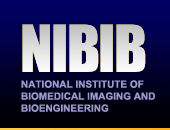Home > Research > NIBIB Intramural Labs > Laboratory of Bioengineering and Physical Science
E-mail this page 
Drug Delivery and Kinetics
Contents
Drug Delivery and Kinetics (DDK) was established to address the serious generic problems that NIH faces in the delivery of drugs and macromolecular agents to experimental animals and human subjects. DDK is made up of a well-defined group of engineers with demonstrated expertise in the mathematical formulation of complex biological systems, as well as design and analysis of experiments. Research areas include physiological pharmacokinetics, pharmacokinetics of macromolecules, regional drug administration, spatially distributed models, kinetics, and experimental fluid mechanics. DDK research is performed in close collaboration with investigators from the life sciences.
Areas of Expertise
- Drug Delivery
- Mass, Heat and Fluid Flow in Living Systems
- Physiological Systems Dynamics
- Pharmacokinetics
Back to Top
Current Research
- Drug Delivery
- Development of quantitative descriptions for drug transport in biological systems to evaluate feasibility of new drug delivery methods, to estimate dose response and toxicity, and to speed experimental and clinical evaluation. Descriptions include considerations of diffusion, convection, interactions with receptors, access to cellular targets, metabolism, and spatial inhomogeneities.
- Investigation of drug delivery to specific sites including the peritoneal cavity, cerebrospinal fluid, brain tissue, spinal cord, eye, lung, solid tumors, or to specific targets such as tumor-associated antigens.
- Development of polymeric implants for controlled and sustained drug release.
- Development and analysis of imaging methods to quantitate in vivo drug concentration or effect, such as autoradiography, phosphor imaging and MRI.
- Methods and technologies applicable to small molecule drugs, as well as macromolecular agents such as monoclonal antibodies, immunotoxins, peptides, oligonucleotides, growth factors, and gene vectors.
- Modeling of Fluid Flow, Mass, and Heat Transfer in Living Systems
- Development of resources and expertise in fluid flow systems relevant to atherosclerosis studies, arterial turbulence, intra-arterial drug delivery, catheter design, and the effects of flow on cell cultures.
- Fabrication of mechanical models of vascular systems for measurement of fluid parameters such as pressure and velocity, and development of tissue models for the study of convection, diffusion, and thermal parameters.
- Development of mathematical formulations, such as finite element models of biological and anatomical systems, for prediction of mass and heat transfer characteristics.
- Cellular, Biochemical, and Physiological Systems Dynamics and Transport
- Modeling and characterization of the dynamical behavior of biological systems, such as complex biochemical networks, cellular responses to drug therapy, cellular proliferation during normal and perturbed growth, processing of ligand-cell surface receptor complexes, and neurotransmitter kinetics.
- Quantitative analyses employing microdialysis, autoradiography, fluorescence micrography and imaging technologies. A high-resolution phosphor imaging instrument (Fuji BAS5000) is available to facilitate autoradiography studies. The instrument features high sensitivity, linear response over 4-5 orders of magnitude, and excellent spatial resolution (nominally 25 µm).
- Pharmacokinetics
- Development of physiological pharmacokinetic models for the distribution and disposition of diagnostic and therapeutic agents, environmental contaminants, and endogenous metabolites. Studies support interspecies scaling of pharmacologic and toxic effects, optimization of chemotherapy, and extrapolation from in vitro systems to in vivo cases.
- Elucidation of the principles that determine the pharmacokinetics of macromolecules. Issues include the rational design of appropriate agents, strategies for their optimal application, and technologies for the spatial and temporal control of their delivery to desired sites of action.
Back to Top
Meet the DDK Staff
Robert Lutz, Ph.D. - Chemical Engineer, Chief
Peter Bungay, Ph.D. - Chemical Engineer
Paul Morrison, Ph.D. - Physical Scientist, Special Volunteer
Robert Dedrick, Ph.D. - Chemical Engineer, Special Volunteer
Back to Top
|







